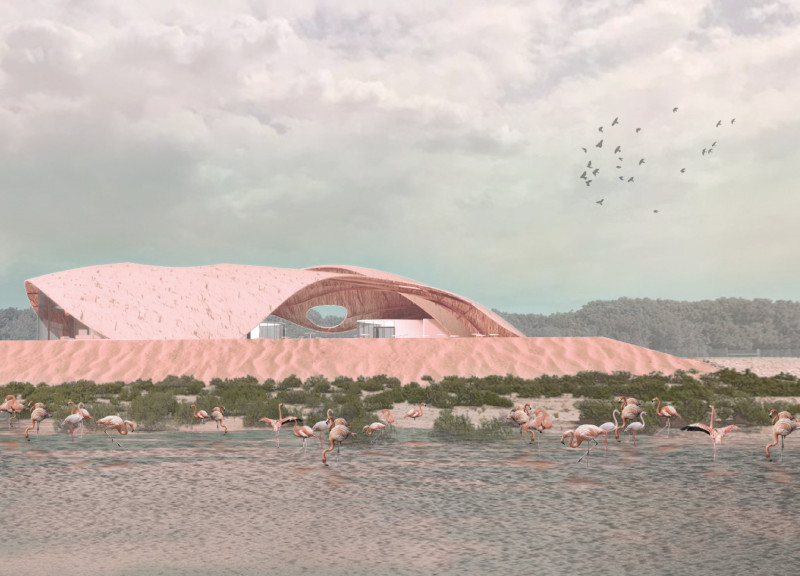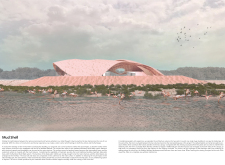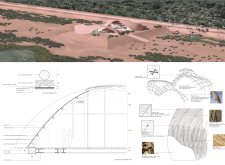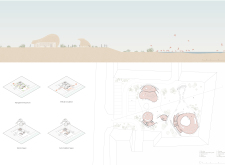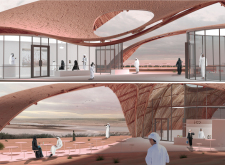5 key facts about this project
Design Approach and Materiality
The Mud Shell’s architectural design emphasizes integration with the wetland landscape. The structure features an organic form reminiscent of natural shapes, allowing it to blend seamlessly into the topography. By utilizing locally sourced materials such as bamboo, date palm fronds, hemp rope, mud, steel, and glass, the design responds to the environmental context while minimizing its ecological footprint. The use of mud in the façade not only offers a unique texture but also reflects the surrounding geology, creating a natural aesthetic aligned with the site’s characteristics.
The architectural layout includes two main volumes organized around a central courtyard, promoting interaction among visitors and fostering a connection to nature. The visitor center is designed with transparency in mind, featuring large glass panels that enhance visual connections with the wetland, inviting occupants to engage with the site. The spatial organization fosters natural circulation, guiding visitors through the facility and reducing disruption to the local ecosystem.
Functionality and User Experience
The Mud Shell project is designed to educate visitors about wetland ecology while providing flexible spaces for various activities. The visitor center serves as a hub for educational programs, workshops, and guided tours, promoting awareness of local wildlife and conservation efforts. The central courtyard acts as a contemplative space, offering unobstructed views of the wetlands and facilitating outdoor activities.
This design is particularly unique due to its emphasis on organic forms and sustainable construction techniques. By marrying local traditions with modern architectural objectives, the project sets itself apart from similar facilities. The integration of cultural elements, such as the use of date palm fronds in the construction, fosters a sense of place and community connection.
Exploration of Architectural Designs
To gain deeper insights into the Mud Shell project, it is beneficial to explore the architectural plans, sections, and designs. These details provide a comprehensive understanding of how the project achieves its goals of functionality, sustainability, and ecological engagement. The thoughtful design strategies and emphasis on materiality contribute to a cohesive narrative of architecture in harmony with its environment. Exploring these elements will enhance the appreciation of the project’s contributions to modern architectural discourse.


